Should I Sumo or Conventional Deadlift?
Short answer: BOTH! A strength athlete will especially benefit from doing both sumo and conventional deadlift. When it comes to competing in a strength sport such as powerlifting, the style of deadlift you choose will be completely dependent on the style you’re most comfortable performing for maximum strength. If you’re a recreational lifter, the utilization of both will result in great strength and muscle gains.
Neither variation is inherently better than the other – this will depend completely on the individual and both types require almost identical amounts of hip extension.
First, we are going to break down the advantages of each and then discuss how you can incorporate both into your training.
Sumo Deadlift
The set up for the sumo deadlift requires the legs starting wider, toes slightly pointed out, and hands inside of the legs. The sumo deadlift requires a shorter range of motion than the conventional deadlift. By starting with the legs wider, you automatically shorten the distance the bar travels to the point of your lockout. So, for most people, this means you can lift more weight with this variation due to the shortened range of motion.
The sumo deadlift doesn’t put as much shear force on the lumbar spine. Shear forces can be destructive. Normal amounts are okay when lifting if your technique is on point, but as soon as technique suffers then shear force becomes “bad” and puts you at greater risk for injury.
Let’s take the low bar squat as an example. Most competitive powerlifters compete with a low bar squat. Doing low bar squats and conventional deadlifts heightens the shear forces on the lower back. Performing sumo deadlifts can alleviate that as the torso stays fairly upright and the hips do not hinge as far back. NOTE: it’s not bad to perform a low bar squat and a conventional deadlift for your competition and training prep – this is just an example; just make sure your programming has optimal volume and technique is solid for both lifts.
The sumo deadlift is anatomically better for some people when it comes to pulling more weight. The Q angle (this is the angle between the quadriceps and the patella tendon) of our hips can determine that. Sometimes, sumo deadlifts are more comfortable for women as we tend to have wider hips than men.
Conventional Deadlift
The conventional deadlift requires a greater hip hinge and lat engagement to help keep a “neutral spine” – so more overall full body engagement. For the set up, bring your feet about shoulder width or slightly closer (depends on the individual) and make sure the hands are outside of the legs as you grab the bar. You want to hinge your hips back and slightly bend the knees to create the optimal start position to initiate the pull. Make sure the hips and shoulders rise at the same time as you are pulling the bar up.
The conventional deadlift has more carryover to other lifts. For example, training the conventional deadlift can help build strength for your sumo deadlifts but it’s not necessarily the other way around. Also, most athletes will utilize the conventional deadlift due to greater posterior chain strength development which can aid in most sports.
Sumo deadlift vs conventional: how much more weight can you pull?
Many athletes believe that one variation is stronger than the other. This actually depends on the athlete, their levers, their weaknesses, and their training program. It’s thought that a lifter could potentially pull more with a sumo deadlift due to the smaller range of motion. This is not always the case as the sumo deadlift does require more time to master in many cases.
Is Deadlifting Sumo Cheating?
No. The sumo deadlift is a great variation and a completely legal competition lift in powerlifting. The mobility and technique required for the sumo deadlift take time and practice to master. The technical skill required for this variation make it more difficult to perform than a conventional deadlift.
Besides, powerlifting and strength sports are all about putting up the most weight and using every advantage within the rules to get a good lift.
No matter which variation you use, be sure you’re practicing proper breathing and bracing when performing your deadlifts.
Sumo deadlift vs conventional: Which one do you prefer?
When is comes to sumo deadlift vs conventional deadlift, which one do you prefer? Do you feel stronger with one or the other? Do you have questions about one of the variations?
Let us know on our instagram @barpathfitness.

Ready to elevate your lifting game? Tune in to our podcast, ‘Stronger than your Boyfriend‘ for expert tips and tricks, then level up with our personal training program! Whether you’re seeking workout wisdom or one-on-one guidance, we’ve got you covered. Transform your body and mindset today. Hit play on the podcast and join our program to crush those fitness goals together!



